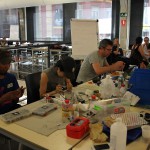Marc Dusseiller, biohack pioneer (1/2)
Published 19 July 2016 by Ewen Chardronnet
This summer, we’re traveling with Swiss globetrotter Marc Dusseiller, who cofounded Hackteria, the international open source network of biohackers and bioartists. In this first part, the ex-researcher in nanotechnology talks about how the DIYbio movement came to Europe and founding Hackteria in India in 2009.
Ten years ago, Marc Dusseiller traded his position as research professor at the Swiss Federal Institute of Technology (ETH) Zurich for the status of open science biohacktivist, known online as dusjagr. He reflects on his journey, from his experiments with open hardware in the classroom, to founding the Hackteria network with the musician Yashas Shetty in 2009, to creating the BioTehna lab in Slovenia. This interview took place during Interactivos?’16 in Madrid on June 2, 2016.
How did you go from research in bio and nanotechnologies to animating a network of biohackers and bioartists?
The story of Hackteria came at a time of my career where I could bring two of my passions together. First, I was originally trained as a researcher in material science and nanotechnology. I got a PhD in biointerface science bio, which is about bridging technical and engineered systems with living environments, such as growing tissue cells on artificial surfaces. And that was for me a very interesting path to go, originally trained as an engineer, into that blurry interface between death and life. And if you work in experimental research, you have to build most of your research devices yourself. All my experimental research set-ups were more or less handmade. I left research in 2006 and got really active in a local community of DIY enthusiasts dreaming of starting our own hackerspace in Zurich, and I was already very interested in open source culture. Already during my research years I followed the open access movement, access to scientific publications, joining a lot of the discussions happening in Zurich. Through that I got involved in a new world of grassroots communities, as well as the Do-It-Yourself electronic scene, as I always played music and was interested in experimental/noise electronic music.
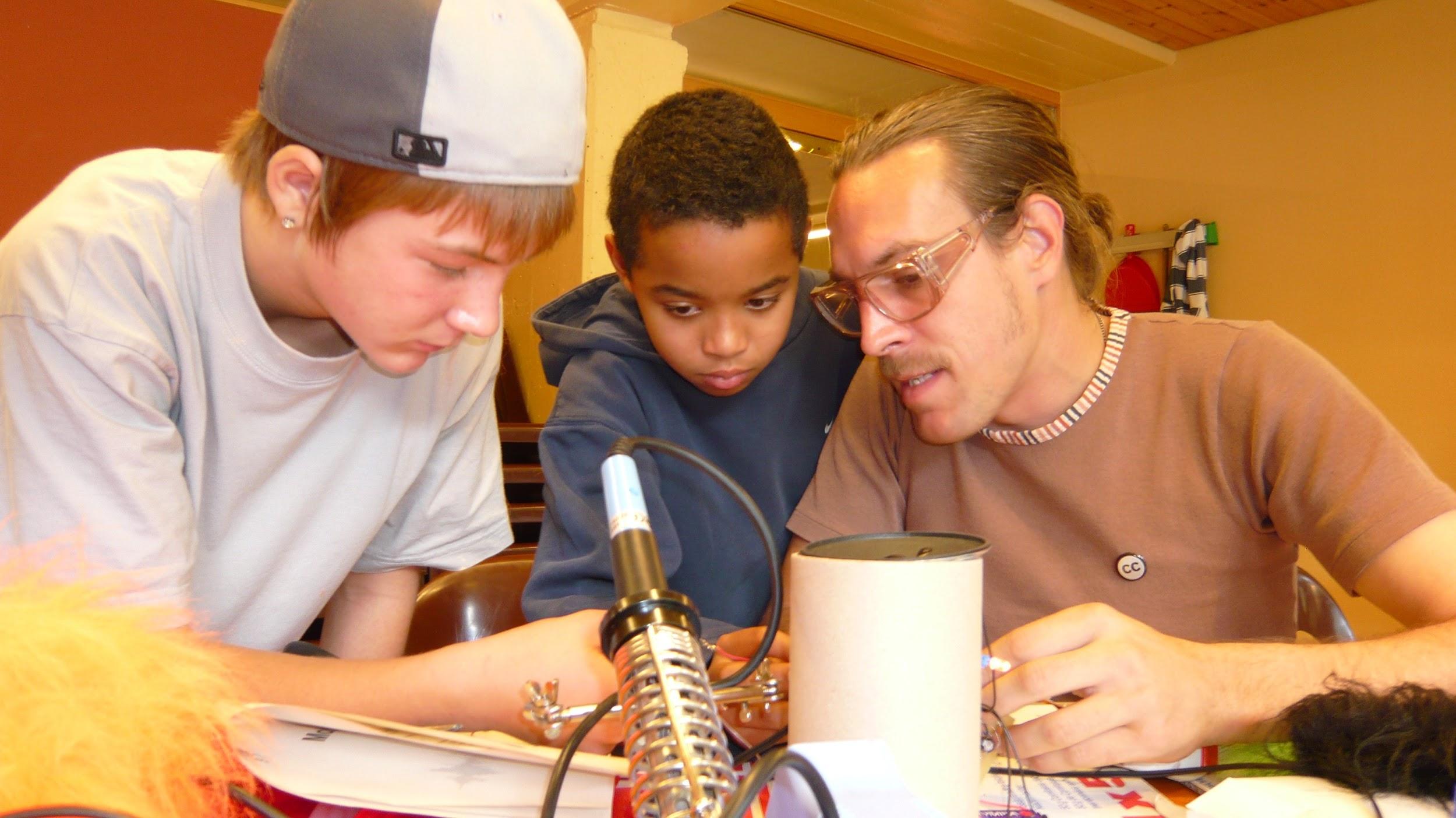
We initiated a community in Switzerland called the Swiss Mechatronic Art Society, where we program, develop hardware and build our own synthesizers. We have our space, the Mechartlab, for producing printed circuit boards (PCB) and hosting workshops. Initially we began in a youth social center, so after my high-end research I suddenly ended up making very basic electronic circuits with children. This got me interested in public discussions on technology in a non-scientific environment, and that kept me busy for 2 or 3 years, and now we have the 10-year anniversary.
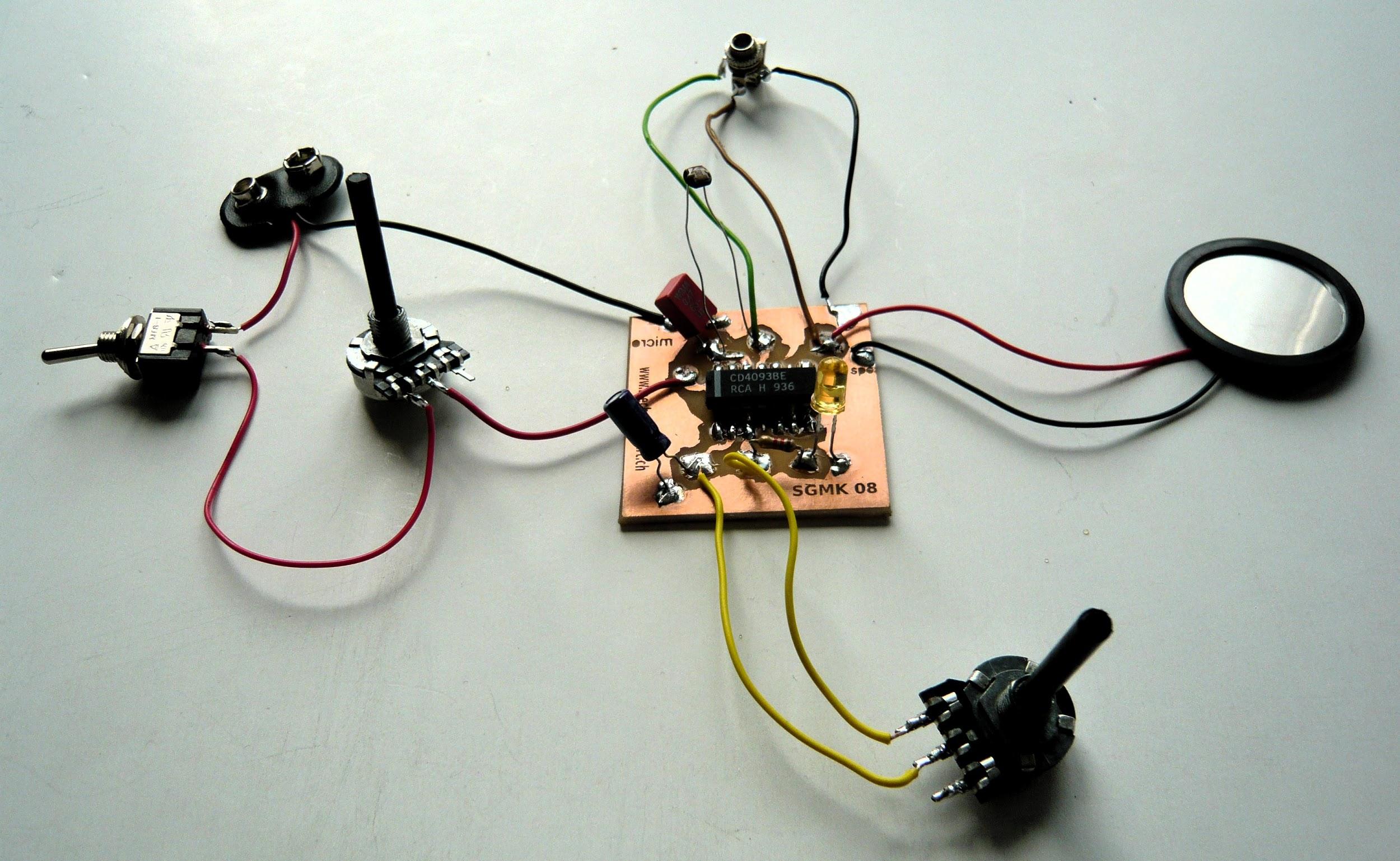
In 2008, I started teaching at the University of Northwestern Switzerland (FHNW) in Basel, an introductory course on micro- and nanotechnology for life science. But having gained this new joy and pleasure in DIY methodology, starting to program Arduinos, open source software/hardware, I thought of implementing that into my class as well. As a teacher, there was no way of introducing my ongoing research, or let’s say that my current research was actually the DIY method. Since I wanted to do practical work with the students, I started a lab course on using open hardware and open source tools to build our own nanotech laboratory. I started a wiki with the class, using ideas from open culture, so that the students should develop something and document it in a way that the next generation of students can build upon their documentation, on their code and instructions, with the aim to build a functional DIY nanotech laboratory over the years. I called it Wetpong to have a geeky game context inspiring the students. What we needed was of course pumps, so we built something with legos, some stuff with optic and lasers, microscopes, and that’s where I started to build with students the first versions of the hacked webcam microscopes.
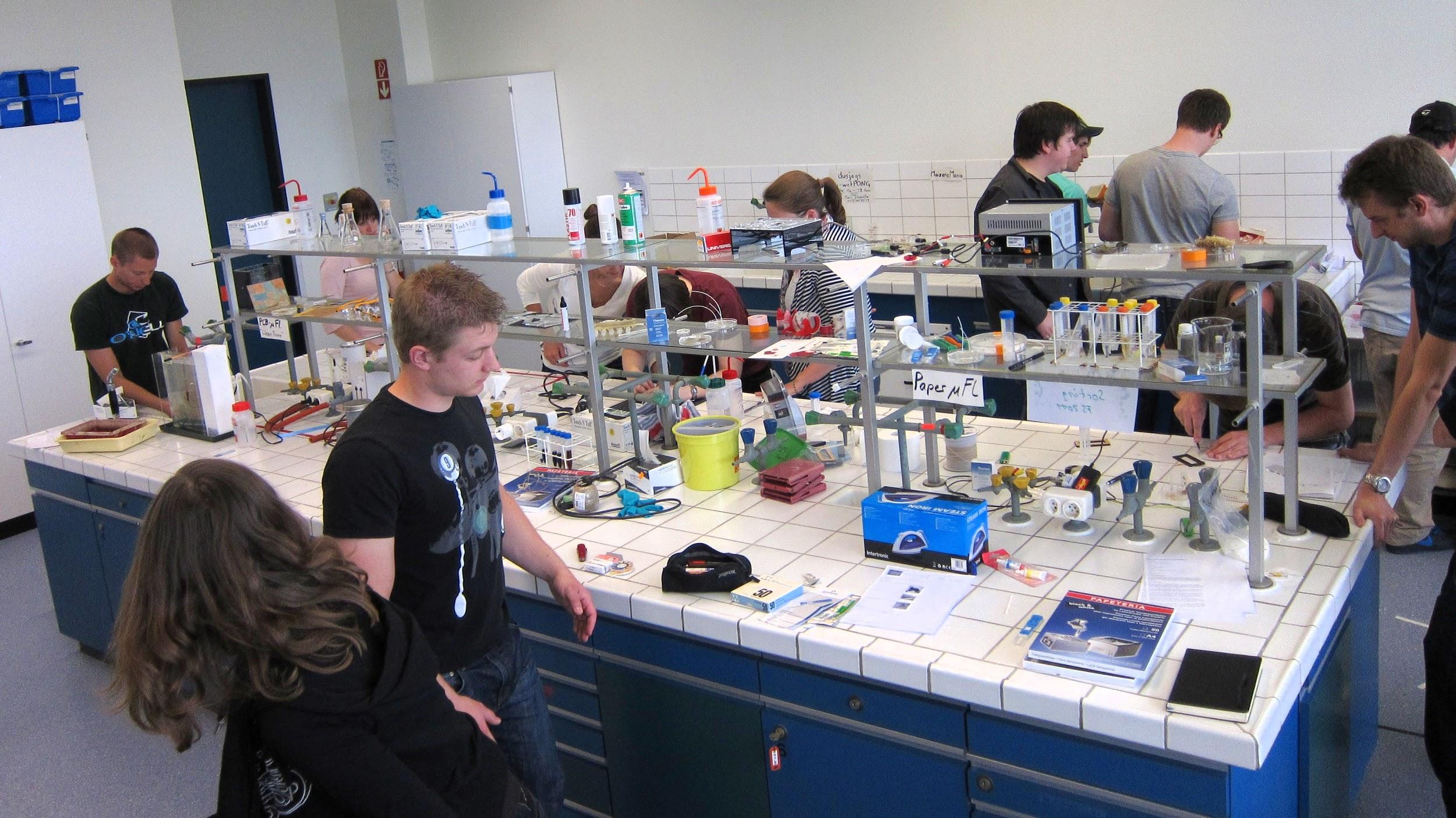
How did your DIY practice merge with your art/science practice?
Around Christmas 2008, I discovered the DIY biology movement, which was just starting out as a mailing-list, and you know, most of the early enthusiasts of the DIYbio movement were Americans, for example IGEM students, so when they announced that something was happening in Madrid, at Medialab Prado, I thought I really had to go there. The topic was “Garage Science”, and it was this workshop format called Interactivos? where artists, hackers and open source get together, so I thought this was perfect. I booked myself a ticket and joined one of the projects that was about “garage astrobiology”, led by an artist called Andy Gracie. The idea was to build our own low-tech tools to study life in outer space. He had some ideas to look for these extremophile species like magnetotactic bacteria and water bears, also known as tardigrades.
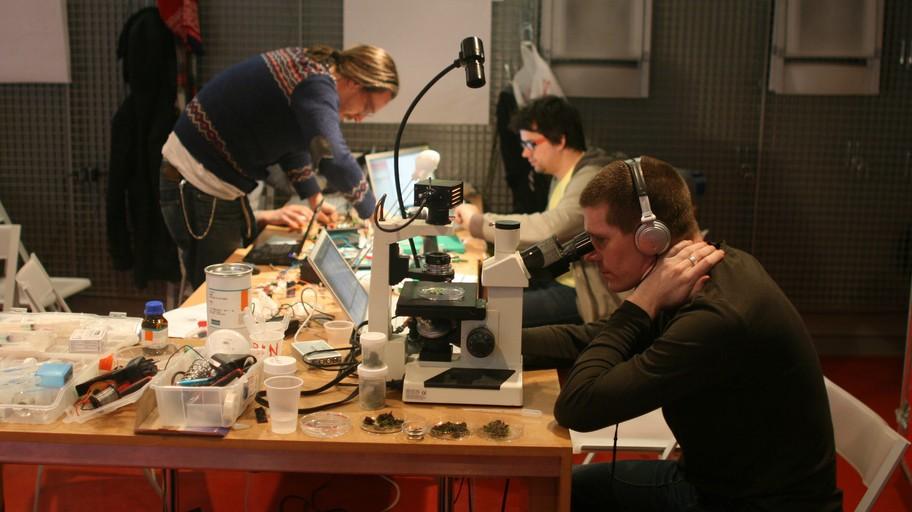
I brought some stuff I developed with my students to the event, the lego and Arduino syringe pumps, etc., the microscopes, and I saw that what we developed with the students was also very valuable for this creative environment of artists, hackers, designers at Interactivos?. People showed a high interest in these DIY science instruments, as training and working with living media for an artist is not so widely accessible. A lot of artists want to work with life science and they think they have to join a residency program, but we found out there are many other ways to go into the topic, as DIY methods have been not explored so much in the world of “bioart”.
Video produced by Migros Kulturprozent and Christoph Merian Verlag for the DVD “Digital Culture and Media Art from Switzerland, 2010 edition”:
In the course of this discussion, we also talked with an educator and musician from Bangalore, Yashas Shetty, who was developing a new program for the Center for Experimental Media Arts (CEMA) of the Srishti school for art, design & technology in Bangalore, exploring collaborations on various scientific topics. They were starting a new course, around synthetic biology, and were just starting a wiki for CEMA, putting out some ideas on how to bring modern tools of molecular biology and genetic engineering into the classroom for art and design students. He also had a strong relationship with a research institution, the National Centre for Biological Sciences in Bangalore, and was planning to join the IGEM competition with his students. They were the first art and design school to enter.
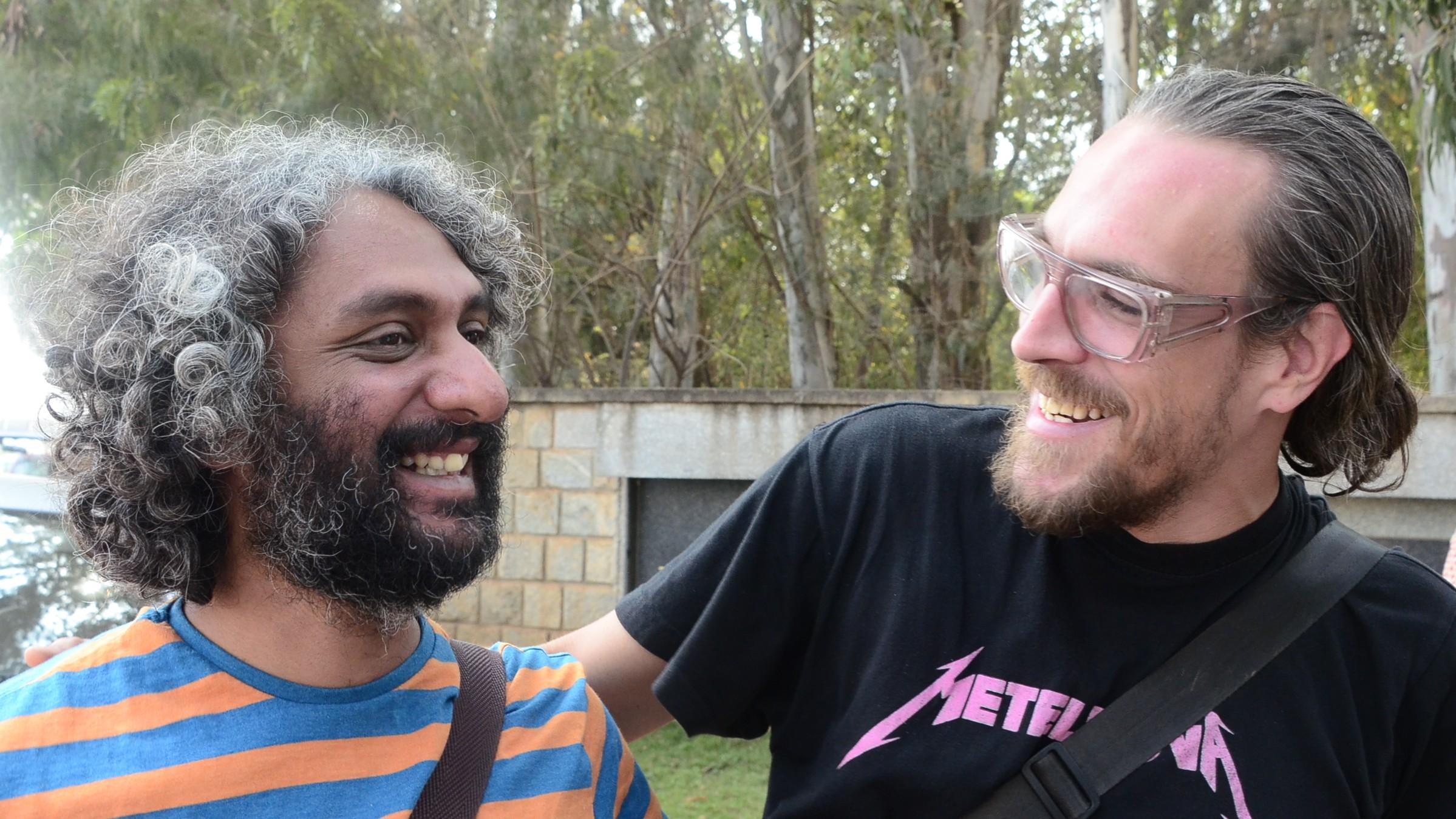
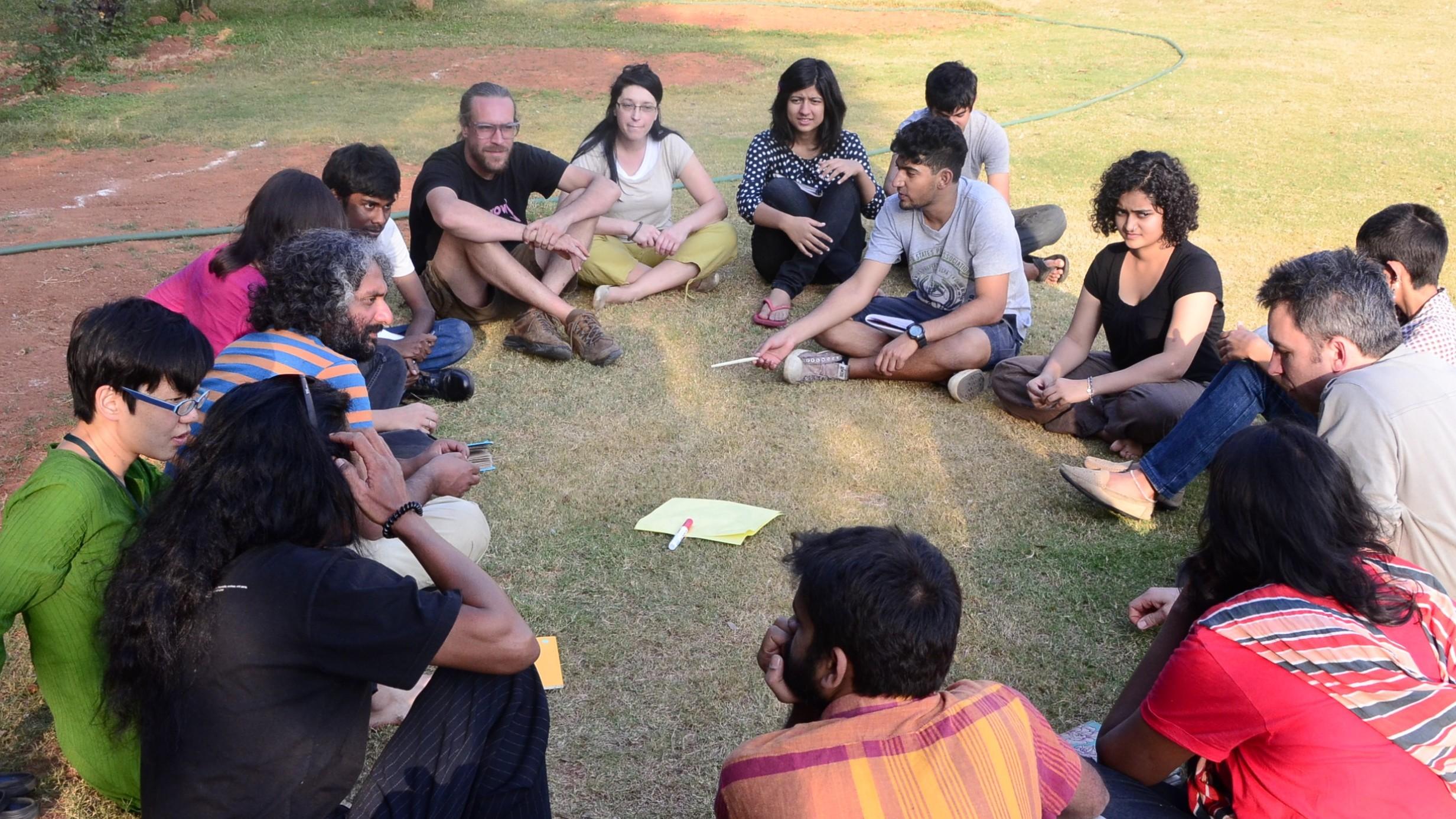
We thought we should inspire artists and designers working with living media and bioart, that they should adapt to the methodologies of open culture and share their methods, so that other emerging artists can reproduce and build upon their work, tools and methods. So we started the idea of Hackteria, to set up a collaborative website where people can write their instructions, share their methods, on how to grow mold, for example. In summer 2009, I travelled to India to work with Yashas. He had already come up with the name Hackteria as a project name, combining the hacker mentality with bacteria. In parallel, we started to organize workshops and got invited by various institutions, media arts festivals, schools, to execute these easy access biology workshops for hackers, artists and geeks.
Inspired by Interactivos?, we thought we should organize physical gatherings where we collaborate, work, live, cook together, develop new projects, etc., and started to call these gatherings Hackteria Lab. We organized such gatherings twice in Switzerland, once in India and once in Indonesia, because in these early days of Hackteria, we also initiated strong collaborations with the Lifepatch community in Yogyakarta, Indonesia. During these Hackteria Labs, a lot of nodes, network projects or spin-offs emerged from this hacker and DIY approach to bioart.
So as Hackteria got started, you stopped teaching?
With the Hackteria project I could combine my background in bio- and nanotechnology and newly acquired enthusiasm for the DIY method, two things I have done in parallel. The last 7 years I was mostly working internationally within the Hackteria network, writing grants, organizing workshops, etc., but I was also teaching in Basel until 2012. Personally, within the Hackteria context, I did a lot of things in Slovenia, workshops, collaborative art and hack sessions dedicated to nanotechnology, the NanoŠmano events initiated with Stefan Doepner and Cirkulacija2 in Ljubljana.
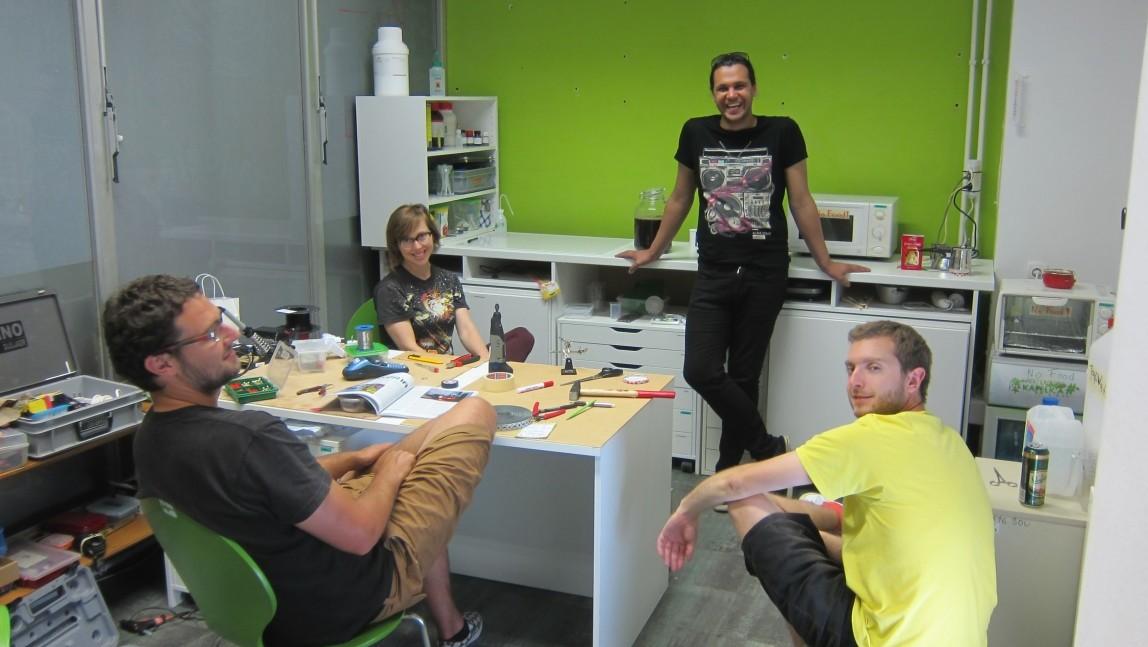
Then I helped Kapelica Gallery to create a more permanent lab, next to their exhibition space, the BioTehna lab, a dedicated space for producing and assisting bioart projects and doing workshops with the local biohacker community. So I quit my teaching job and moved to Slovenia for two years, to develop the Hackteria network further and establish this collaboration with Kapelica Gallery. During that period Hackteria grew, but as a network of individuals with a shared spirit, bridging different disciplines, artists, hackers, open source cultures, into making biology more accessible to artistic practices through instructions, building dedicated hardware, or methods to build your own low-cost laboratory. It kept me busy, but on my side I was not so involved in the artistic interpretations, I was mostly building the BioTehna laboratory and the community around it.
Next, part 2 of this interview, in which Marc Dusseiller talks about the difficulties in spreading DIY open source models, the trend of innovation, founding the Global Open Science Hardware movement…

